History of Říčany
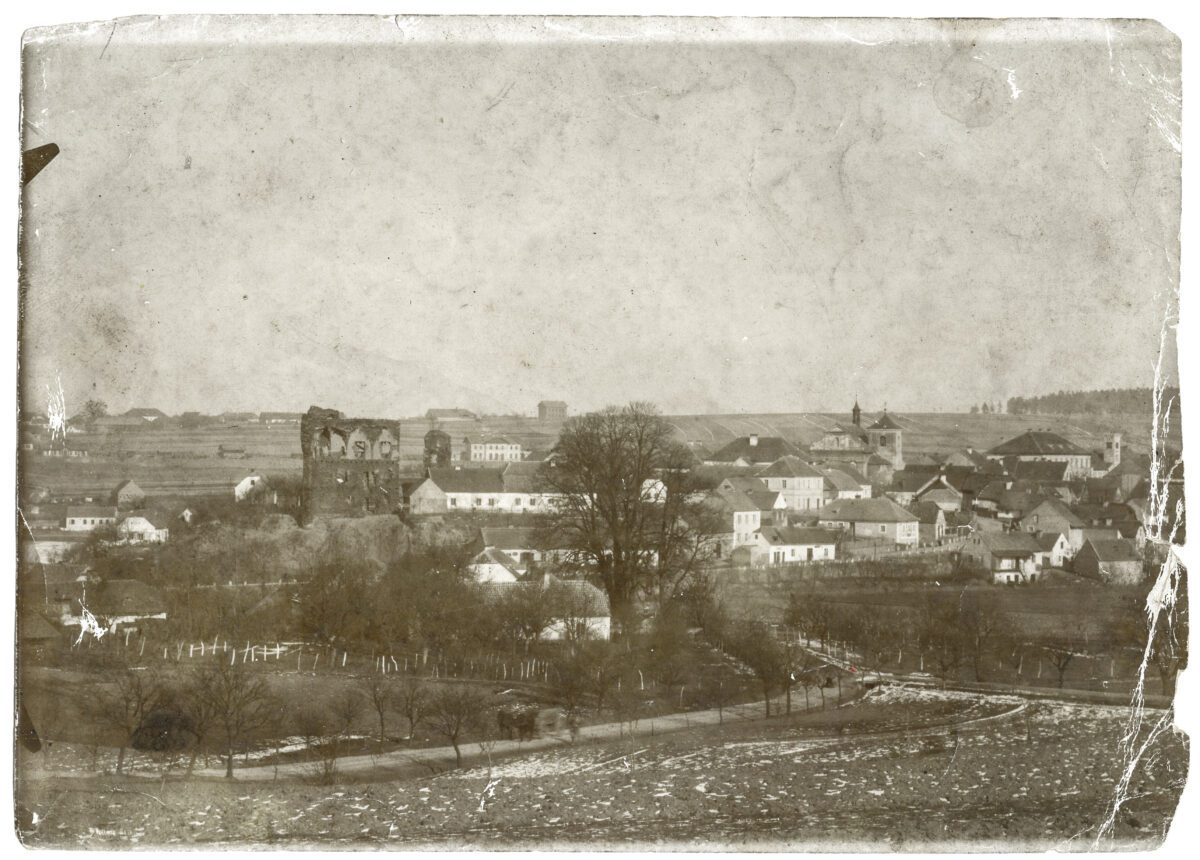
The town of Říčany is situated in a gently undulating, wooded landscape, which has had an agricultural character since ancient times and impresses with its rich history. What is actually the history of the town, which was founded on a low hill surrounded on three sides by the Říčany stream (and later the Lázeňský and Mlýnský ponds) and whose identity is still shaped by the ruins of a medieval castle still standing on the edge of its historical centre?
A bit of fairy tales to start…
Although Říčany is a very old town, it is not very rich in direct historical monuments. Due to its location, it certainly did not escape the early settlement of the Celts and the Germans. Slavic settlement starting from 6. century places Říčany on the border of the original principality of the Bohemian tribe. Written documents about the first centuries of our town’s existence either did not exist or were lost at the end of the Thirty Years’ War, when the town was burnt to the ground. Nevertheless, Václav Hájek of Libočany writes about the first, but historically unsubstantiated event in connection with our town in the Czech Chronicle (1541). In it, the chronicler describes a bloody “battle for the court of Říčany”, which was supposed to have taken place in 748 between Rozhon, the Prince of Kouřim, and Nezamysl, the Prince of Vyšehrad, over the boundaries of a court that Rozhon wanted to acquire for his own possession. The Premyslid Nezamysl was victorious and took fifty prisoners to Vyšehrad. He was generous to the defeated, but before giving them their freedom, he ordered Rozhon to cut off Rozhon’s nose with a sickle as a warning. He then gave Říčany to his faithful governor, who led his army in that battle. Considering Hájek’s reputation as a great storyteller, but not a very credible historian, we take this reference rather as a fable or legend that has no real basis.
The whole Czech history and history knows no greater pest than this man, who, crowding into the writing of a vast Czech chronicle, set out with unheard-of impudence not only to invent and to recount in detail stories unprecedented in his own eyes, but also to support them with writings that were also fictitious and unseen by anyone, not even by the writer himself...
František Palacký
The period of the town’s foundation and first flowering
Sometime in the second half of the 13th century. century the castle of Říčany was built and probably at the same time the town and the church of St. Peter and Paul. Its founders were the Lords of Allrom. Their original seat, Všechromy, was located near the old country road from Prague to Sázava. The founding of Říčany was probably due to better protection of the important road from Prague to the newly founded royal Kouřim.
The first written mention of Říčany, which seems to really refer to the town, dates back to 1289. It is a complaint of the Prague bishop Tobias of Bechyně, who complains that a certain Ondřej “of Říčany” (in the original “de Bychan”) plundered Liblice near Český Brod. This Ondřej of Říčany probably means Ondřej of Všechrom, one of the founders of the local noble family, at that time already residing at Říčany castle.
The builder of the Říčany seat was probably Petr of Všechrom, the founder and ancestor of the whole Říčany family. Peter belonged to the circle of the highest court dignitaries of the last Premyslids, he held the office of the food-bearer and then the highest chamberlain. This explains the extraordinary quality and fortification of the castle for its time. After Říčany, however, it was the already mentioned grandson of Peter Ondřej, who was in the charter of Wenceslas III. is mentioned as the highest provincial judge Oldřich the Greek of Říčany.
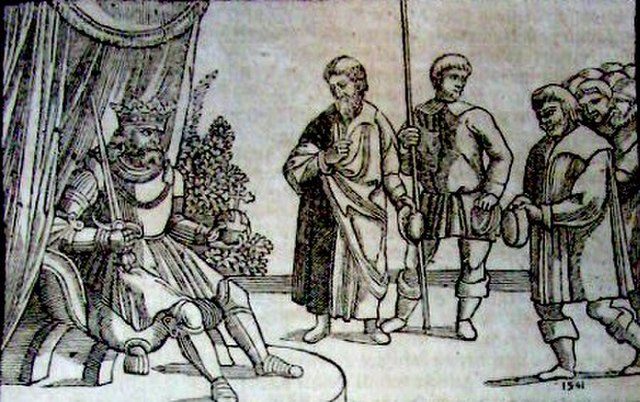
The lords of Říčany also owned other estates in the vicinity of the newly founded castle – Velké Popovice, Kunice, Průhonice and Čestlice, Křížkový Újezdec, Jirčany and Tehov. In the following century, the family of the lords of Říčany with a triple leaf of silver water lilies on a red field in the coat of arms branched out and can be found in various places in Bohemia. Until the Hussite wars, however, Říčany remained the centre of the family and its most important stronghold.
At 14. century, Říčany is a natural and the largest settlement in the wide surroundings with the right to market. The castle is the administrative centre of a large estate and the town offers a refuge for specialised craftsmen and peasants. However, the period of natural prosperity of the town was ended by the Hussite uprising. In 1420, after a short siege, the castle was sacked by the Hussites, Mr. Diviš of Říčany (an opponent of the Hussites) was expelled, the church estates were divided among the Hussite nobility and Říčany became the property of the New Town of Prague for the next half century. The lords of Říčany left not only the town, but also the whole region and will never come back, although various branches of the family had estates in the whole Bohemia for several centuries (Hořovice, Zásmuky, …). The last line of the lords of Říčany died out at the beginning of the 19th century. century.
People gradually dismantled the castle into building stone. When they dismantled almost the entire castle, they also dismantled the slate promontory below it.
At the end of 15. century, a significant change of ownership took place and the estate passed to the prominent Trčků family from Lípa. Říčany, which consisted of a castle, a small town and an ash court, also included Radošovice, Přestavlky, Nesvačily, Předčice (now extinct village in the Říčany cadastre), Otice and Zděbrady. The whole goods were estimated at 4,000 kopeks. However, since Říčany ceased to serve as a manor house (the Trčků family resided in Vlašim or in their Prague house), the castle is significantly deteriorating and is being dismantled by the local inhabitants for building materials.
Prosperity and Wealth 16. century and the complete destruction of the city by the Thirty Years’ War
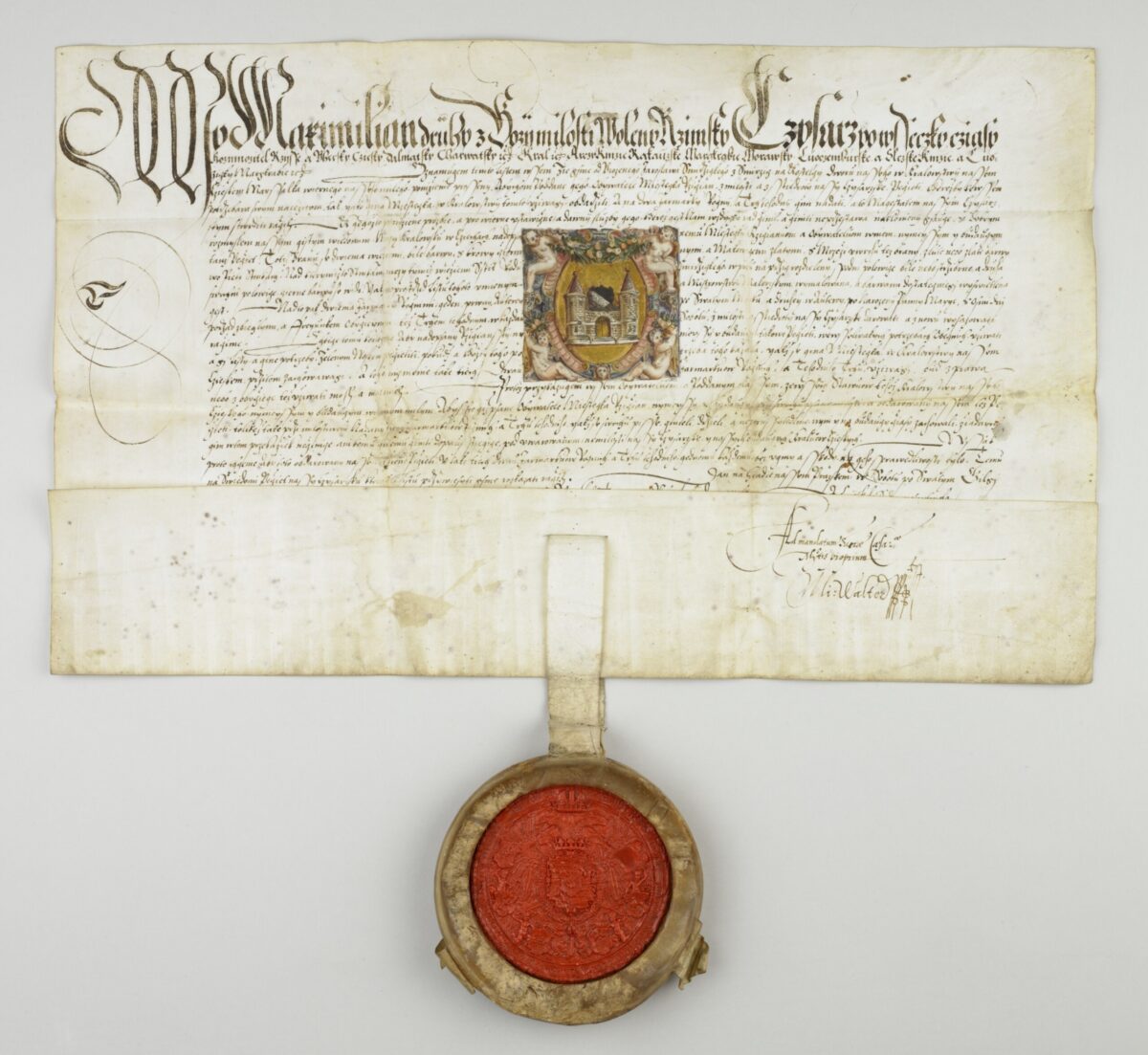
In 1572, the estate of Říčany was purchased by Mr Jaroslav Smiřický of Smiřice, one of the leading grandees of the Bohemian Kingdom, court marshal and later hofmister at the court of Ferdinand I. In the context of the economic development of the town, he advocated the written confirmation of the town privileges, which is evidenced by the privilege of Emperor Maximilian II. of 3. 9. 1575, which further strengthens the legal status of the town of Říčany, grants the town a seal and a coat of arms and authorises the organisation of 2 fairs a year. In Říčany there were 41 manor houses, a bathhouse, a forge, a municipal mill and a hospital. The castle and court are described as ruined.
The brewery, which represented a large source of income, the malt house and the distillery were functional. Two houses – Peškovský and Doušovský – also served the needs of the nobility. In this period, the executioner of Říčany is also documented – the town had the right of throat, as the only one on the Uhrněves estate. It was expensive to maintain their own executioner and it is a testament to the wealth of the Romans that they could afford it. If we add to this the fact that there was also a parish church with a newly repaired rectory in Říčany, we get a picture of a small but flourishing town whose inclusion in the Smiřický dominion benefited it significantly despite the loss of its function as an administrative seat. For comparison – at the same time Radošovice had 5 serfs’ lands.
The town flourished again under the administration of the Smiřický family of Smiřice in the second half of the 16th century. The century was ended by the suppressed Estates’ Revolt (1618-1621), the Battle of White Mountain (1620), in which the Smiřič family took a significant part on the Protestant side, and the subsequent tragic events of the Thirty Years’ War. The countryside of Říčany has always been the breadbasket of Prague and Central Bohemia, therefore it has not been spared from the campaigns of enemy armies. Although Říčany survived the first two thirds of this conflict in relative peace, at the end of the war in 1645 and 1648 it could not resist the raids and pillaging of the Swedes, who practically razed Říčany to the ground. The estates of the Smiřický family were confiscated and passed by purchase from Albrecht of Wallenstein to Charles of Liechtenstein.
Nobody knows where Říčany actually was…
Topographia Bohemiae, Moraviae et Silesiae, 1650
The extent of the catastrophe that befell the town is evidenced by contemporary testimonies – in Merian’s Topografia Bohemiae in 1650 it is written that nobody knows where Říčany used to be. In 1651, 20 adult inhabitants were listed in Říčany, and in Radošovice there was only one owner of the land. It took more than 100 years before Říčany managed to return to its pre-war state. 20 years after the end of the war, the town council was restored, and in 1671 a new town hall with a cloakroom was built on the site of today’s Old Town Hall. In 1699, the Marian Column was erected in the square on the model of the Old Town Square, as a thanksgiving to the Mother of God for saving the town from the plague. It was not until 1707 that the parish was rebuilt, when there were about 250 inhabitants in Říčany.
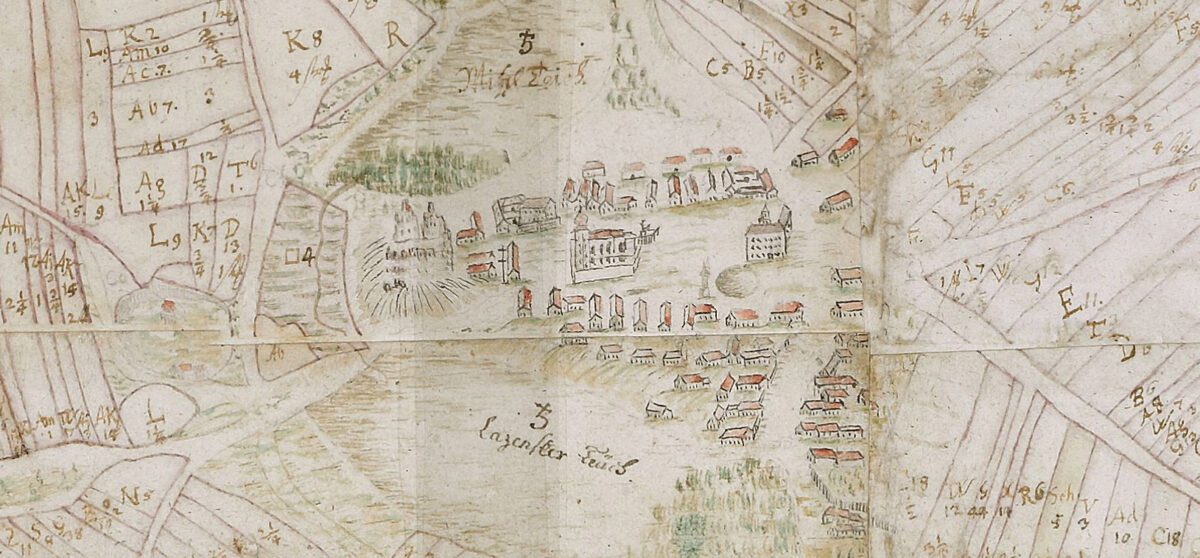
Restoration of the town under the administration of the Liechtensteins
Marie Therese of Savoy, great-granddaughter of Charles of Liechtenstein, became an important figure for the town . During her 60-year reign (1712-1772), Říčany experienced a slow rise again. The Duchess had the church of St. Peter and Paul in Baroque style, a new two-storey rectory was built. In 1736 a new two-storey town hall was also built in the town. 4. 4. 1748 Empress Maria Theresa confirmed the privileges granted to the Říčany family in the past by Maximilian II. Even in 18. century, the town did not escape wars, but none of them had fatal consequences for the town.
Until 19. century, Říčany entered another long war conflict. During the Napoleonic Wars, Russian troops marched through the town twice. In 1843, Říčany already had 135 houses with 1009 inhabitants. A new two-storey school is built, the appearance of which is already captured in the first photographs, the cemetery around the church is closed and a new one is established behind the town, which was not built until the early 1950s. 20 years. century stood on the site of today’s Park por. Koreš (today’s Olive Street). In 1830, the governor of Uříněves, Jesser, founded a poorhouse, which, after the rebuilding of the village, was still in use after the Second World War. World War II.
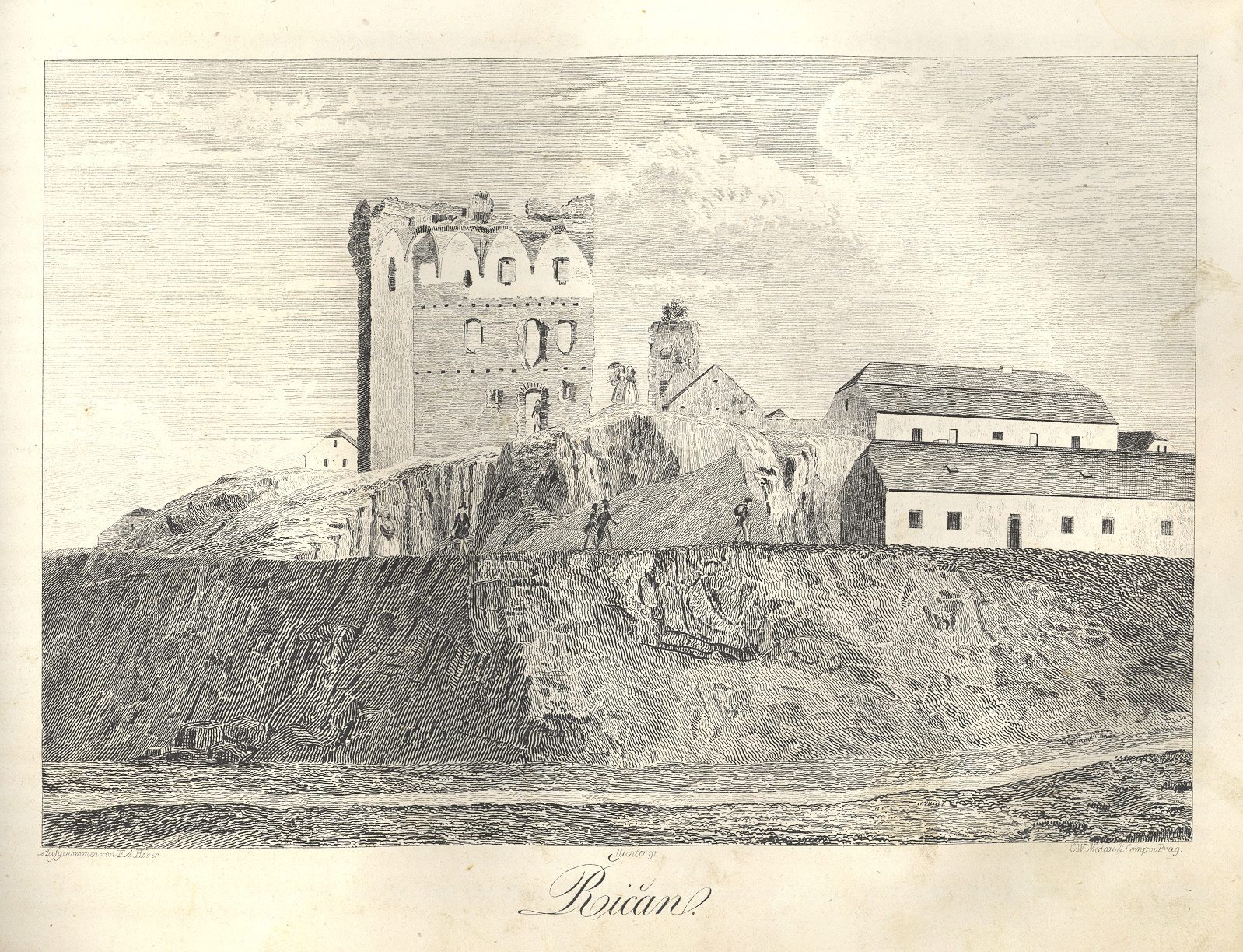
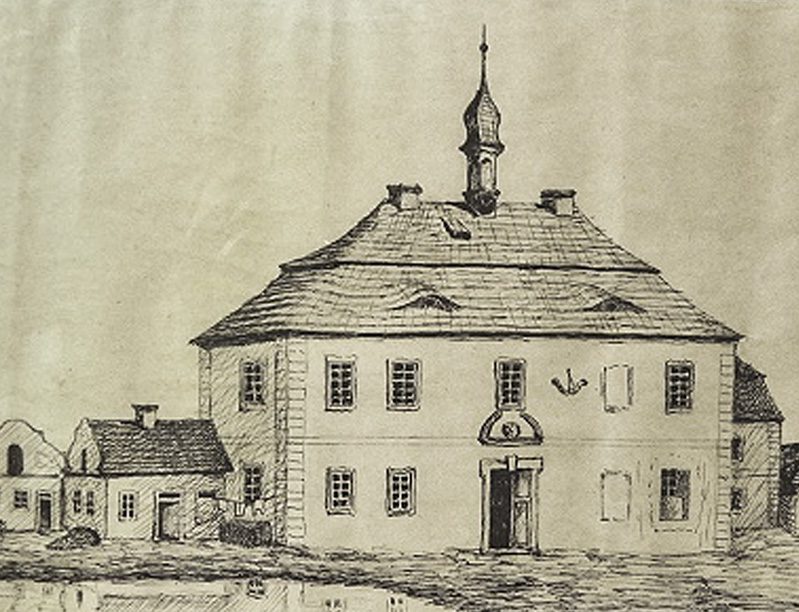
Until 1850 Říčany was a serf town of the Uhříněves estate. Říčany became a political and judicial district with 90 municipalities for the first time in 1855. Within the new needs, the headquarters of the district office (today’s Old Town Hall building with a tower) and the court and political administration (an adjacent building) were built here. After 13 years, Říčany was incorporated into the Český Brod district and later became part of the Žižkov district.
In the second half of the 19th century. century, there was also a significant development of social, economic and guild activities. In addition to the new railway, new roads are being built (Prague-Kouřim, Říčany-Mnichovice, Říčany-Kolovraty). The District Economic Association (1870) and the District Credit Union (1874) were founded . The large Bartoš steam mills were built on the outskirts of the town, as Říčansko, despite the industrial development of its centre, remained an agricultural area supplying the capital with food. As far as cultural activities are concerned, various associations were founded – the Volunteer Fire Brigade (1874), the Jablonský Singing Society (1881), the Sokol (1896), the Ornamental Society (1901), the Sports Club (1901), dedicated to football. In terms of building development, Říčany grew in all directions and gradually merged with nearby Radošovice.
Among the important new buildings constructed in Říčany at this time are also The nursery of the Olive family, called. Oliveum (1896), Thomayer’s Nursery (1896) – gardens used for growing ornamental plants, especially trees, and also a new school building (1908) still in use today.
Towards a new republic
Although the construction of the Prague-Benešov railway line (connecting to the already built line between České Budějovice and Linz), which started in 1869, proved to be extremely important for the growth of Říčany and its surroundings, the development of railway transport also had a major influence on the creation of the recreational area. The railway brought Říčany closer to Prague, as it enabled a daily commute to work, and at the same time – in the opposite direction – Říčany became a popular tourist area for Prague residents. At that time, luxury villas, recreational and sporting facilities, inns, dance halls and relaxation pavilions began to be built here.
Říčany became a district town again in 1925, i.e. after the establishment of the Czechoslovak Republic, and ceased to be a district town in 1960, when it fell under the Prague-East district. After the abolition of the districts in 2003, many administrative agendas were transferred back to the city, which became a municipality with extended jurisdiction, with 51 surrounding municipalities falling within its boundaries. The original settlements of Radošovice, Jažlovice, Kuří, Pacov, Strašín and Voděrádky belong directly to the town.